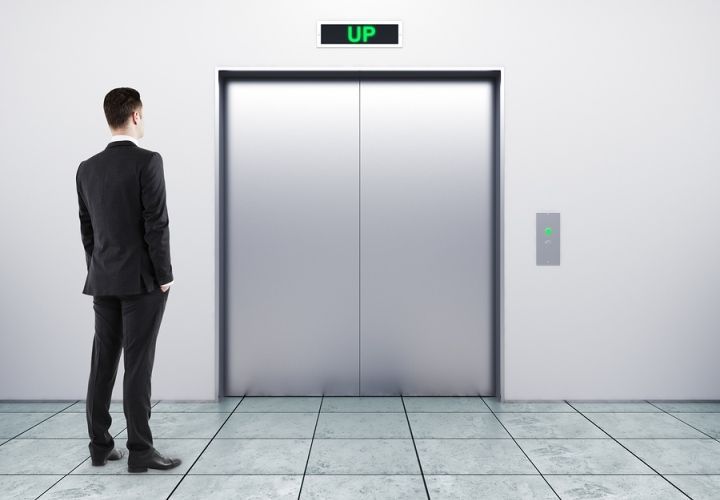How’s Your Website’s Elevator Pitch?
Legend has it that the origins of the elevator pitch go back to old Hollywood. A screenwriter would follow a studio executive into an elevator and pitch an idea in the time it took for the executive to reach his or her floor.
The elevator pitch has become a popular tool at networking events, conferences and random meetings when people have a limited time to pique someone’s interest in a product, service or themselves.
If the elevator pitch is successful, a more in-depth conversation will ensue at some point. If not, you’ll be forgotten.
In a structured networking meeting, you may have 30-60 seconds to deliver a well-rehearsed elevator pitch.
In a less structured environment – or an elevator – you’ll probably have closer to 20 seconds, if that.
A website’s elevator pitch has even less room for error.
Researchers from the Missouri University of Science and Technology found that it takes two-tenths of a second for website visitors to form an initial opinion of the brand.
Two-tenths of a second.
Let’s assume your website’s design is appealing enough to elicit a positive feeling about your brand, and someone is willing to stick around for a little while.
When I say “a little while,” I’m talking about a matter of seconds. I’ve seen different data that says the majority of visitors spend anywhere from eight to 15 seconds or less on a website.
This is why you need what I call the website version of an elevator pitch.
A website’s elevator pitch is one simple sentence on the home page that clearly explains what you do, and the value of what you do.
In other words, it should sum up your value proposition. But it should also make a visitor nod, smile or raise their eyebrows.
It needs to be simple and clear, but it also needs to be interesting and authentic.
Just like a live elevator pitch, your website’s elevator pitch doesn’t have to close a sale.
Just like the goal of a live elevator pitch is to continue the conversation, the goal of your website’s elevator pitch is get visitors to keep reading.
Which will put the visitor one big step closer to a sale.
But with a website, you can’t corner a visitor like you can corner a person at a networking event or conference. Or in an elevator.
You don’t have a captive audience, especially on mobile devices. Website visitors are receiving email alerts, meeting requests, texts, tweets and status updates while they’re evaluating your website and your company.
It’s much easier for a website visitor to become distracted or just walk away if the website’s elevator pitch falls flat.
They don’t have to figure out how to physically escape, and they don’t have to worry about hurting your feelings.
They just have to click a little X and look for another option.
That’s why your website’s elevator pitch needs to be clear, concise and interesting.
Go to the home page of your website and ask these questions.
Does your website have an elevator pitch that stands out visually and is strong enough to entice a visitor to get to know your company better?
If so, is that statement supported and validated by the other content on your home page and the rest of your website?
Every page of website content should be part of one cohesive unit, driven by your value proposition. And a one-sentence version of that value proposition should take center stage on your home page.
That’s your website’s elevator pitch. It can be the difference between a five-second visit and long-term, profitable relationship.
Subscribe to my blog to receive insights and commentary about copywriting and marketing.
SIGN UP FOR MY BLOG
Thank you for subscribing to my blog!
Oops, there was an error sending your message. Please try again later.
I love testimonials, but only real-world, unfiltered client feedback tells the whole story.
© Scott McKelvey Consulting, LLC. All Rights Reserved. | Privacy Policy | Accessibility Statement


